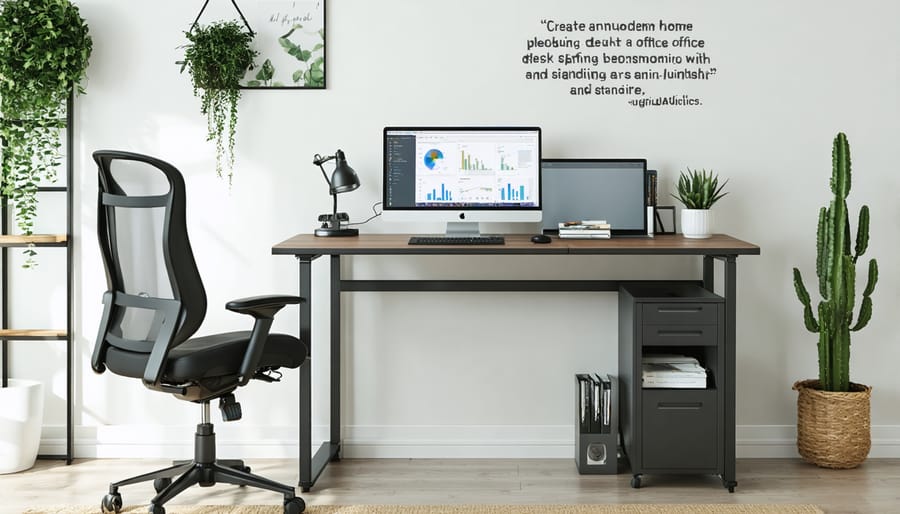Secure your smart home systems by changing default passwords to strong, unique ones for each device. Enable two-factor authentication whenever possible. Regularly update firmware and software to patch vulnerabilities. Segment your network, keeping smart devices on a separate Wi-Fi network from computers and smartphones storing sensitive data. Monitor device activity and set up alerts for suspicious logins or usage patterns. Disable unnecessary features, ports, and protocols to minimize attack surfaces. Stick with reputable brands that prioritize security and promptly address issues.
Secure Your Wi-Fi Network
Having an unsecured Wi-Fi network is like leaving your front door unlocked, inviting intruders into your home. Hackers can easily exploit vulnerabilities in your network to access your personal information, steal your identity, or even control your smart home devices. To protect your family and home, it’s crucial to take steps to secure your Wi-Fi network.
Start by using a strong, unique password for your router. Avoid using easily guessable information like your address or birthdate. Enable WPA2 or WPA3 encryption to scramble your data and make it unreadable to anyone who might intercept it. Regularly update your router’s firmware to patch security holes and protect against the latest threats.
Consider setting up a guest network for visitors to keep your primary network secure. Disable remote access to your router unless absolutely necessary. Finally, invest in a reputable smart home security system that can detect and alert you to any suspicious activity on your network. By following these simple steps, you can enjoy the convenience of smart home technology without compromising your security.

Use Strong, Unique Passwords
Using strong and unique passwords for each of your smart devices and online accounts is essential for protecting your home and personal information. Avoid using easily guessable passwords like “123456” or “password,” and never reuse the same password across multiple accounts. Instead, create complex passwords that include a mix of uppercase and lowercase letters, numbers, and special characters.
A strong password should be at least 12 characters long and avoid using personal information like birthdays or pet names. Consider using a passphrase, which is a series of random words strung together, as they are easier to remember but still difficult for hackers to crack.
To manage your passwords effectively, use a reputable password manager app that securely stores and organizes your login information. These apps can also generate strong passwords for you and automatically fill them in when needed, making it convenient to maintain unique passwords for each account without having to remember them all.
Regularly updating your passwords, especially if you suspect a breach or unauthorized access, is crucial. Set reminders to change your passwords every few months and enable two-factor authentication whenever possible for an extra layer of security.

Enable Two-Factor Authentication
Two-factor authentication (2FA) is an extra layer of security that requires users to provide two forms of identification when accessing their accounts. Typically, this involves entering a password and a unique code sent to a trusted device, such as a smartphone. By enabling 2FA on your smart home platforms, you significantly reduce the risk of unauthorized access, even if someone obtains your password.
To set up 2FA on popular smart home platforms like Amazon Alexa or Google Home, start by opening the respective app on your mobile device. Navigate to the settings menu and look for options related to security or two-factor authentication. Follow the on-screen instructions to enable 2FA, which may involve providing a phone number or downloading an authenticator app.
Once activated, you’ll be prompted to enter a unique code alongside your password whenever you sign in to your account. This code will be sent to your trusted device via text message or generated within the authenticator app. Without access to this secondary code, potential intruders will be unable to gain entry to your smart home system, even if they have your password.
Enabling 2FA is a simple yet effective way to fortify your smart home’s defenses against hackers and other cybercriminals. By taking a few minutes to set up this additional security measure, you can enjoy greater peace of mind knowing that your devices, data, and family are better protected from digital threats.
Keep Software Up-to-Date
Keeping your smart home devices’ software and apps up-to-date is crucial for maintaining a secure and smooth-running system. Outdated software can leave your devices vulnerable to hacks, malware, and other security threats. Regularly updating your devices ensures that you have the latest security patches, bug fixes, and performance improvements.
To stay on top of updates, check your device settings or the manufacturer’s app for notifications about new software versions. Many devices allow you to set up automatic updates, which can save you time and ensure you don’t miss critical patches. If automatic updates aren’t available, set reminders to manually check for and install updates on a regular basis, such as once a month.
When updating your devices, be sure to read through any release notes or documentation to understand what changes are included and how they might impact your system. It’s also a good idea to backup your device settings and data before installing major updates, just in case something goes wrong. By keeping your smart home devices updated, you can enjoy their full potential while keeping your home and data safe and secure.

Be Mindful of Device Placement
When it comes to smart home devices like cameras and voice assistants, placement is key for balancing convenience and privacy. While it’s tempting to put these devices in central locations for optimal coverage, it’s important to consider the potential privacy implications. For example, placing a smart camera in your bedroom or bathroom could inadvertently capture sensitive moments. Similarly, a voice assistant near a window might pick up private conversations from outside.
To strike the right balance, consider placing cameras and voice assistants in common areas like living rooms, kitchens, or entryways. These locations provide a good overview of your home without compromising privacy in more intimate spaces. If you do need coverage in bedrooms or bathrooms, opt for devices with built-in privacy features like physical shutters or mute buttons.
When setting up your devices, take a moment to assess the camera’s field of view or the voice assistant’s range. Adjust the placement or settings to ensure they’re not capturing more than intended. It’s also a good idea to regularly review the footage or recordings to make sure nothing sensitive has been inadvertently captured.
Remember, the goal is to enhance your home’s security and convenience without sacrificing privacy. By being mindful of device placement and regularly checking your settings, you can enjoy the benefits of smart home technology while protecting what matters most.
Regularly Review Device Settings
Regularly reviewing the settings and permissions for your smart home devices is a crucial habit to maintain the security and privacy of your connected home. Take a few minutes every month to log into the apps or web interfaces for each device and ensure the settings align with your current needs and comfort level. Pay close attention to permissions related to data sharing, location tracking, voice recordings, and integration with other services. If you spot anything unfamiliar or no longer needed, adjust or revoke the permissions. Keeping your devices’ firmware and apps updated is also essential, as these often include security patches and bug fixes. By staying on top of your smart home settings, you can enjoy the convenience of smart automation with greater peace of mind, knowing you’re in control of your data and privacy.
Have a Backup Plan
While smart home technology offers many benefits, it’s essential to have a backup plan in case of system failures or security breaches. Don’t rely solely on your smart devices for safety and security. Ensure you have traditional measures in place, such as smoke detectors, carbon monoxide alarms, and fire extinguishers. Keep spare keys hidden outside in case your smart lock malfunctions. Have a written list of emergency contacts and procedures readily available, including how to manually override your smart systems if needed.
Consider investing in a backup power source, like a generator, to keep essential devices running during outages. Regularly test your backup systems to ensure they’re functional. It’s also wise to have a family emergency plan that everyone understands and practices. This could include designated meeting spots, evacuation routes, and communication methods that don’t rely on smart devices or the internet.
By having a solid backup plan, you can enjoy the convenience of smart home cleaning devices and other technologies without compromising your family’s safety. Remember, while smart homes are incredibly helpful, they’re not infallible. Being prepared for the unexpected can provide peace of mind and keep your loved ones secure.
Conclusion
The security and privacy of your smart home should be a top priority as you embrace the convenience and efficiency that these devices offer. By implementing the strategies and best practices outlined in this article, you can significantly reduce the risks associated with smart home technology, protecting your family, home, and personal information from potential threats.
Remember to secure your home network, keep your devices updated, use strong and unique passwords, and be cautious when sharing personal information. Regularly monitoring your smart home ecosystem and staying informed about the latest security developments will help you maintain a safe and enjoyable connected home experience.
As smart home technology continues to evolve, it’s essential to adapt and refine your security measures accordingly. By taking a proactive approach to smart home security, you can confidently enjoy the benefits of a connected home while minimizing the potential risks. Embrace the future of smart living, but always prioritize the safety and well-being of your loved ones and your home.





